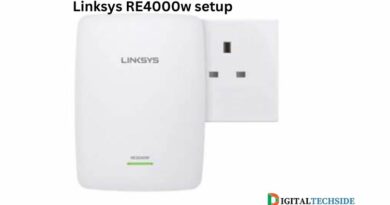GPS Driver Behaviour Management Tracking Software For Fleet
Driving behavior monitoring in fleet companies is an important feature that helps fleet managers keep better tabs on their vehicles and drivers. GPS (Global Positioning System) device-driven behavior monitoring helps in achieving this by providing comprehensive data about a vehicle’s course, speed, driving habits, and adherence to traffic regulations. Essentially, this software helps in making important decisions regarding vehicle safety, fuel efficiency, and driver performance.
Features of Driver Management System With GPS
GPS-based Driver Behavior Monitoring is used primarily in fleet management to observe and scrutinize the driving habits of operators. Fleet managers frequently employ this user-friendly tracking system to gauge and refine driver behavior. The idea is to infuse safe and economical driving practices in drivers, thereby elevating overall operations.
- Real-time Monitoring: This software allows to tracking of a vehicle’s activities in real time. For instance, if a driver is speeding excessively or takes an unauthorized detour, fleet managers can instantaneously identify and address the situation.
- Driver Scoring: These systems typically include driver scoring features. Using algorithms, the system evaluates and scores a driver’s behavior based on various parameters like speed, braking, acceleration, etc. This allows companies to monitor each driver’s performance regularly.
- Trip History: This feature provides a detailed history of each trip, including start and end times, idle duration, the routes taken, and any stops made along the way.
- Fuel Efficiency Monitoring: This feature helps in identifying instances of excessive idling, improper gear usage, or aggressive driving, all of which negatively impact fuel efficiency.
- Maintenance Alerts: GPS monitoring systems can track vehicle use and mileage to send alerts for regular maintenance tasks like tire replacement, oil change, brake inspection, etc.
- Harsh Braking: Frequent hard braking may indicate that a driver needs coaching to improve their driving habits. It could also mean that there’s a problem with the vehicle itself that is forcing the driver to brake harder than necessary.
- Taking Sharp Turns: Similarly, if a driver often speeds or takes sharp turns, this style of driving can pose a safety risk and increase fuel consumption. The fleet manager, upon noticing these patterns, can intervene and provide necessary coaching or safety training to the driver.
Need of Supervising the Behaviour of Drivers in Fleet Management
Supervising driver behaviour plays an essential role in fleet management for several reasons. It ensures safety, cost-efficiency, legal compliance, and overall operational efficiency.
- Ensuring Safety: A fleet manager is directly responsible for the safety of the fleet’s drivers and the public sharing the road with them. Negligent driving behaviours, such as speeding, harsh braking or accelerating, and reckless driving, substantially increase the risk of accidents. By monitoring driver behaviour, managers can identify dangerous habits and rectify them to ensure safety.
- Improving Efficiency and Cost Reduction: Poor driver habits like excessive idling, over-speeding, and unplanned routes increase fuel usage and maintenance costs. Proper supervision can highlight these behaviours, encouraging more efficient practices and leading to significant cost savings.
- Maintaining Legal Compliance: Different regions have specific rules and regulations regarding driving and vehicle operations. Mismanaged driving can lead to severe legal penalties. Hence, supervising driver behaviour aids in maintaining compliance with legal requirements.
- Safeguarding Company Reputation: A company’s reputation may be significantly damaged if a fleet driver is involved in preventable accidents due to poor behaviour on the road. Ensuring drivers stay within the guidelines of professionalism preserves the company’s reputation.
Why Go For Driver Behaviour Monitoring software?
GPS tracking devices can monitor speeds, route history, idle times, abrupt stops, and harsh acceleration. They can also alert managers to vehicle misuse outside of work hours.
Software by TrackoBit offers real-time GPS tracking, coupled with a dashboard that shows insights into driver behaviour. This can be used to detect anomalies such as excessive idling, which burns unneeded fuel, or harsh breakings that might indicate a potentially aggressive driving habit.
It can automate compliance with hours-of-service regulations by collecting information directly from the vehicle, thereby avoiding manual errors. The system alerts managers and drivers about impending violations.
These systems not only minimize risks and optimize resources, but they also allow managers to provide personalised feedback to drivers, promoting safer and more efficient standards across the fleet. Thus, the supervision of driver monitoring system using vehicle tracking software becomes an integral part of fleet management operations.
Before You Go!
GPS-based driver behaviour monitoring is more than just keeping an eye on drivers—it’s a continuous process of improvement, safety, efficiency, and cost-saving in fleet management. The ultimate goal is creating a reliable and safe driving environment, and a culture of responsibility and respect for company assets.

As a DIGITALTECHSIDE author, the majority of our articles have been focused on technology, blogging, business, lifestyle, social media, web design and development, e-commerce, money, health, education, entertainment, SEO, travel, and sports.
Contact us at digitaltechside@gmail.com if you have questions of anything.



